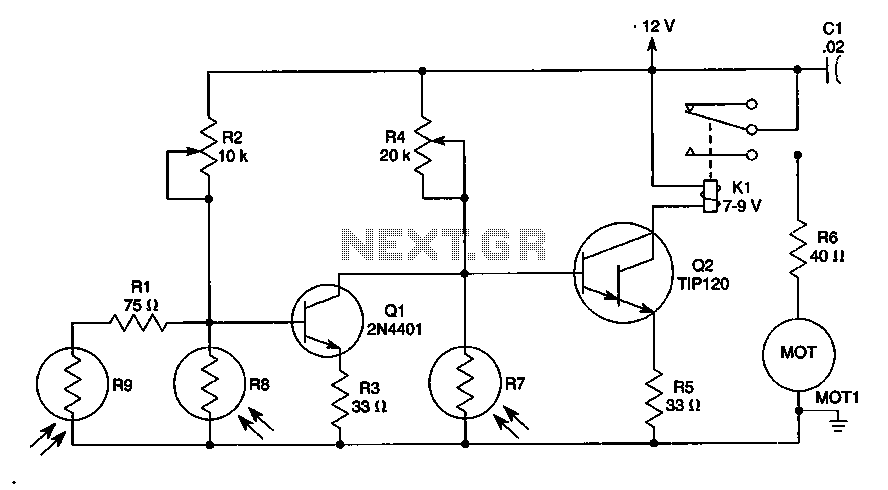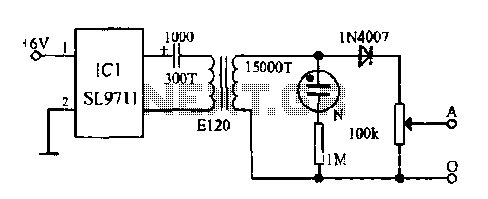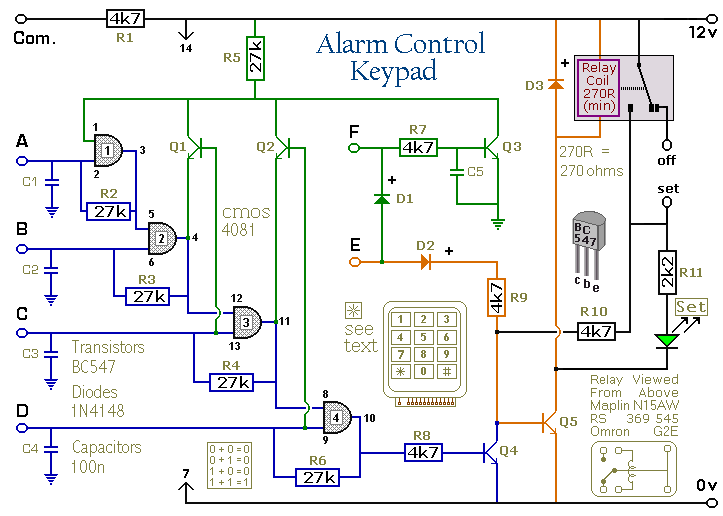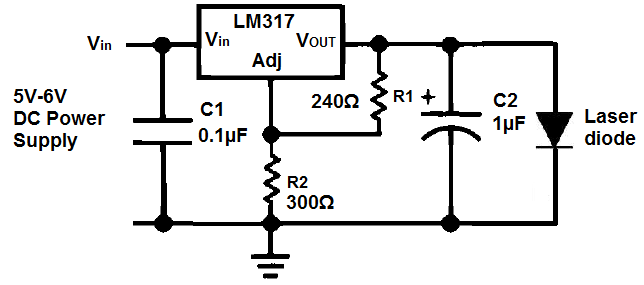
Vcr Tv On-Off Control Circuit
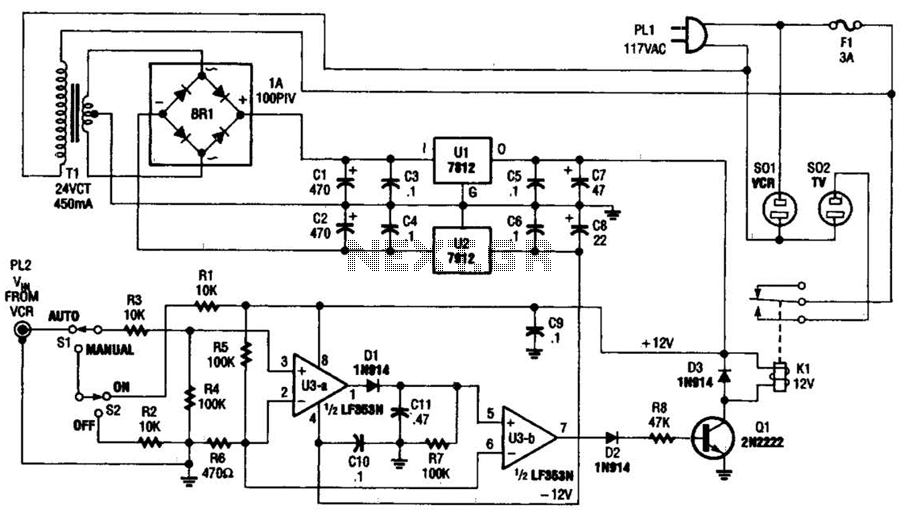
This circuit detects the video signal from the VCR. When the VCR is powered on, the video signal is amplified by U3A to drive Q1, which activates K1. This setup eliminates the need to manually turn on and off two video devices each time. In many instances, this functionality reduces the reliance on a cable box, with the cable-ready VCR taking over this role.
The circuit design employs an operational amplifier (U3A) configured as a signal amplifier to boost the video signal from the VCR. The amplified output from U3A is then fed into a transistor (Q1), which acts as a switch. When the VCR is activated, the operational amplifier detects the presence of the video signal and triggers Q1 to conduct. This, in turn, activates a relay (K1) or a similar switching device, allowing the downstream video device to receive the amplified signal without manual intervention.
The advantages of this configuration include simplified operation for the user, as it automates the switching process between devices, ensuring that the video signal is consistently routed to the appropriate output without requiring additional steps. Additionally, this circuit can enhance the overall reliability of the video system by minimizing the wear and tear associated with frequently toggling power states on multiple devices.
Furthermore, the design can be optimized by incorporating features such as signal conditioning to filter out noise, ensuring a clean video output. Protection components, such as diodes, can be added to safeguard against voltage spikes that may occur when switching states, thereby increasing the longevity and robustness of the circuit.
In summary, this circuit effectively streamlines the operation of a video system by automating the signal detection and switching process, reducing the need for manual intervention, and enhancing the overall user experience. This circuit senses the video from the VCR. When the VCR is turned on, video signal is amplified by U3A and to drive Ql, activating Kl. In this manner, it is not necessary to turn on and off two video devices every time. In many cases, this avoids the use of a cable box, the cable-ready VCR performing this function.
The circuit design employs an operational amplifier (U3A) configured as a signal amplifier to boost the video signal from the VCR. The amplified output from U3A is then fed into a transistor (Q1), which acts as a switch. When the VCR is activated, the operational amplifier detects the presence of the video signal and triggers Q1 to conduct. This, in turn, activates a relay (K1) or a similar switching device, allowing the downstream video device to receive the amplified signal without manual intervention.
The advantages of this configuration include simplified operation for the user, as it automates the switching process between devices, ensuring that the video signal is consistently routed to the appropriate output without requiring additional steps. Additionally, this circuit can enhance the overall reliability of the video system by minimizing the wear and tear associated with frequently toggling power states on multiple devices.
Furthermore, the design can be optimized by incorporating features such as signal conditioning to filter out noise, ensuring a clean video output. Protection components, such as diodes, can be added to safeguard against voltage spikes that may occur when switching states, thereby increasing the longevity and robustness of the circuit.
In summary, this circuit effectively streamlines the operation of a video system by automating the signal detection and switching process, reducing the need for manual intervention, and enhancing the overall user experience. This circuit senses the video from the VCR. When the VCR is turned on, video signal is amplified by U3A and to drive Ql, activating Kl. In this manner, it is not necessary to turn on and off two video devices every time. In many cases, this avoids the use of a cable box, the cable-ready VCR performing this function.
